OpenAIRE and EOSC-hub @ EOSC Symposium 2019
The first day of the symposium was framed by an opening plenary that offered a selection of perspectives on the big questions that govern EOSC, ranging from national developments with and towards EOSC delivered by Dr. István Szabó and Ivan Maric, to a highly informative historical contextualization of EOSC in the tradition of the W3C by Jean-François Abramatic.
As part of these breakout sessions, the EOSC Architecture WG invited participants to join a Town Hall meeting, in which Jean-François Abramatic briefly introduced the Working Group's status quo, and then opened up discussion to ask for input from the audience. Key points included recommendations on:
- service interoperability,
- the creation and maintenance of a glossary and/or catalogue of existing offers
- the need to combine bottom-up with top-down approaches, which – as was suggested – could also be used as a vehicle to share the vision of EOSC more broadly.
The combination of top-down and bottom-up approaches then also was the underlying theme of the first day's closing plenary, which opened a space for a variety of existing use cases from different disciplines for EOSC to be presented. And to mark the end of a highly informative first day at the EOSCsymposium, during the evening, participants had the opportunity to see Budapest via a beautiful and scenic boat ride along the river Danube, during which the social dinner took part in the evening. Here's a few impressions:
Day Two began with a plenary on EOSC's rules of participation (RoP) that was chaired by Juan Bicarregui (EOSC Rules of Participation WG). Highlighting the importance of RoP as a cornerstone to establish transparency within EOSC with regards to rights, obligations and accountability of all stakeholders involved, Michel Schouppe, the European Commission's Directorate General Research & Innovation introduced the underlying framework upon which the EOSC rules of participation are currently being developed. Wolfram Horstmann (EOSC Rules of Participation WG Co-Chair) then introduced the current state of the Working Group's RoP scoping document, which is currently open for comments by stakeholders and other interested parties.
Up next were a selection of breakouts on policies, training, and AAI. The two-part breakout session on Skills, Competencies, and Training Infrastructure was chaired by Natalia Manola (OpenAIRE, EOSC Skills & Training WG), and brought together representatives from a variety of European projects involved in Open Science Training. The first part focused on skills and competencies deemed necessary to both navigate and work with EOSC, and to "do" Open Science, and how these could be combined with existing approaches to training for Open Science. Presentations from Lennart Stoy (EUA), Angus Whyte (DCC), and Gergely Sipos (EOSC-Hub) covered aspects and elements that are already in development with regards to the EOSC platform, while Vasso Kalaitzi (LIBER), Elli Papadopolou (Athena RC), and Najla Rettberg (OpenAIRE) presented on established community/stakeholder approaches.
With the second part, the focus then changed to infrastructure, which in this context is understood to include not only technology, but also human networks of trainers and interested stakeholders, which are understood as key to realize the shift towards Open Science practices in Europe. Presentations from Mateusz Kuzak (eScience Center, NL), Susanna Assunta-Sansone (Oxford University, UK), Pedro Príncipe (FOSTER/OpenAIRE) and Brian Mathews (STFC/ FAIRsFAIR) highlighted examples of what a future EOSC training catalogue might comprise with respect to platforms, standards, and training offers. From these inputs then developed a lively discussion around the many aspects of training and skills development, including the participants' expectations from the EOSC Working Group on Training & Skills.
Chaired by Emma Lazzeri (ISTI-CNR, OpenAIRE), the breakout session on Open Science Policies examined the uptake of EOSC in different countries and contexts to ensure successful harmonisation, offering a forum of exchange and support for those currently in the process of establishing policies of their own. Niklas Blomberg (Elixir), Bregt Saenen (EUA), Elena Giglia (University of Turin, OpenAIRE, OPERAS), Elli Papadopoulou (ATHENA RIC, OpenAIRE), and Prodromos Tsiavos (ATHENA RIC, OpenAIRE) presented institutional, national and regional perspectives on the topic, and in the subsequent Town Hall debate, participants discussed the complexities that the development of, and a commitment to, a given policy might entail. It was pointed out that
- smaller institutions might not have the capacity necessary to implement a full-fledged Open Science policy,
- some consider it too early to commit to policies in view of EOSC because EOSC itself has yet to be defined in a clear and concise way.
On the other hand, participants agreed that the major players in EU governments, funding agencies and HE institutions need to be on board in order to make EOSC a success. To facilitate this, the discussion showed that the federated approach that EOSC is proposing would need to be open to include locally-developed solutions. Further to that, participants highlighted a need to provide more training and support in all things Open Science so as to bring EOSC to the researcher.
This day's closing plenary then picked up on this thread, focusing on regional initiatives that work towards making the federated approach of EOSC become a reality: Chaired by Jan Hrusak (EOSC Landscape WG), the plenary offered insights into the EOSC regional projects EOSC-Nordic, EOSC-Pillar, EOSC-Synergy, ExPaNDS and NI4OS, and culminated in a panel discussion on different parts and elements that could be federated into EOSC, and the challenges that member states are facing in doing so.
Day Three offered even more perspectives, with two breakouts focusing on a selection of use cases from the environmental and life sciences from EOSC-Life, EOSC-hub, Blue-Cloud and ELIXIR, and social and cultural data from the Social Sciences and Humanities Open Cloud (SSHOC), respectively.
Two closing plenaries then helped to round off the overall experience of EOSC Symposium: focusing on users and roadmaps for the future, these plenaries helped to again highlight the main theme of the conference after two and a half days of informative and extensive exchange. One participant's comment neatly summarized the underlying idea behind EOSC: "EOSC is not a one-stop-shop for cars", but should rather be understood as an ecosystem similar to the actual Single Market in which a variety of stakeholders want to move without barriers.
Ultimately, this means that all of us participating in EOSC would need to help facilitate the accommodation of a diverse landscape of different use cases and help make the idea of barrier-less, and openly-available, public Commons become a reality – a welcome outlook on the road ahead that has become visible during these three days at the EOSC symposium.
More information on the collaboration between EOSC-hub and OpenAIRE can be found here and here.
When you subscribe to the blog, we will send you an e-mail when there are new updates on the site so you wouldn't miss them.
About the author
Author's recent posts

funding from the European
Union's Horizon 2020 Research and
Innovation programme under Grant
Agreement No. 777541.

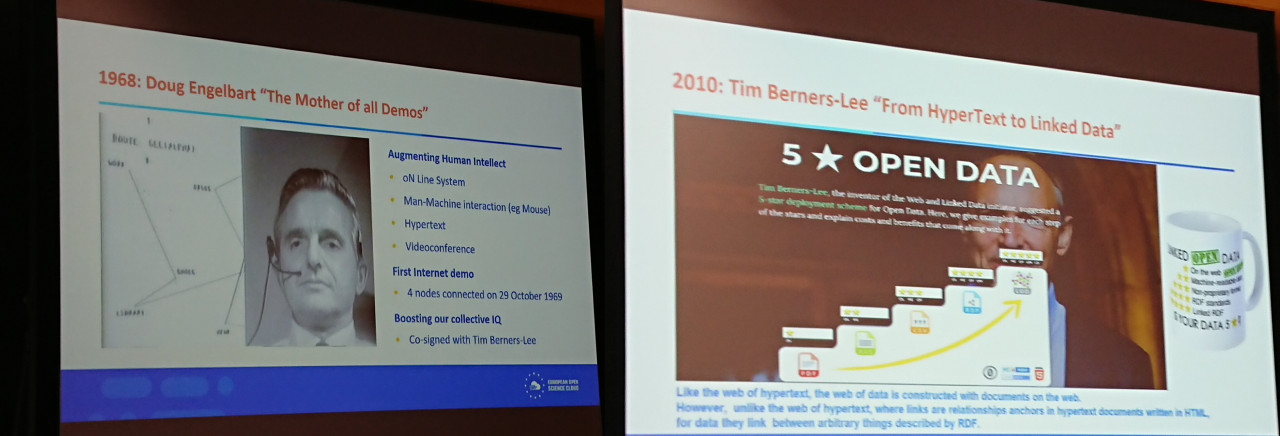
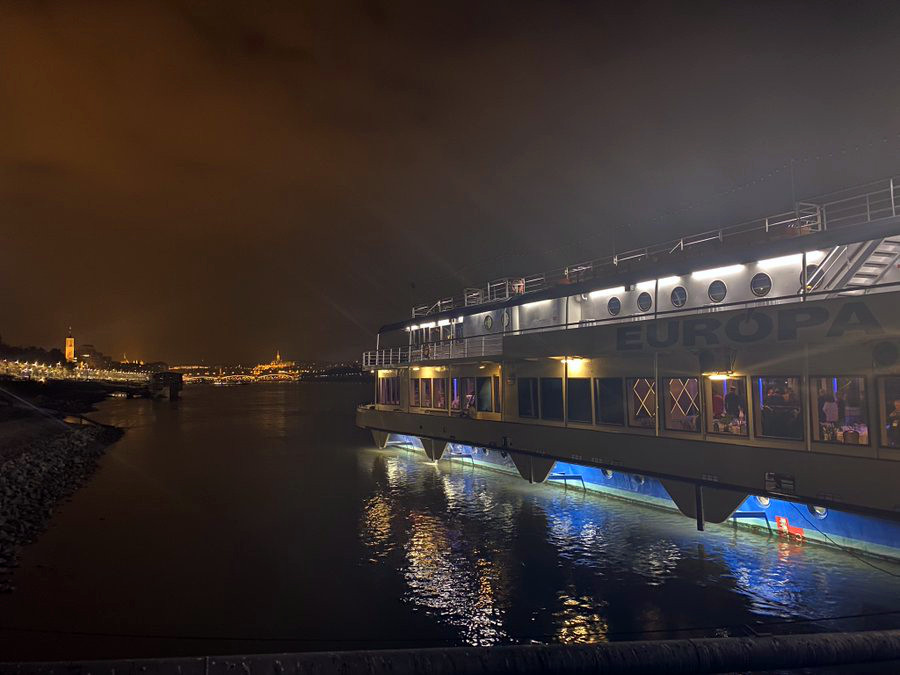
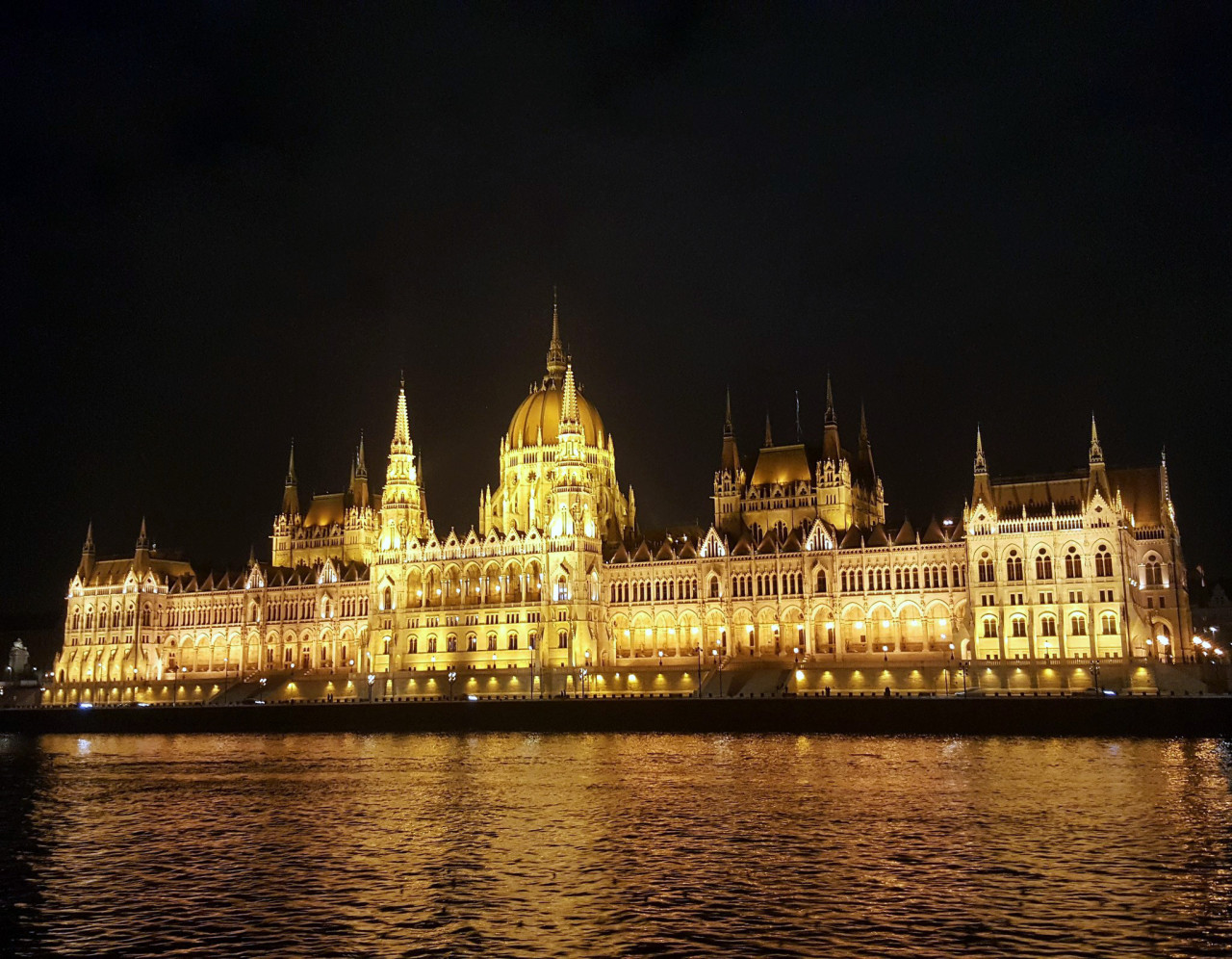
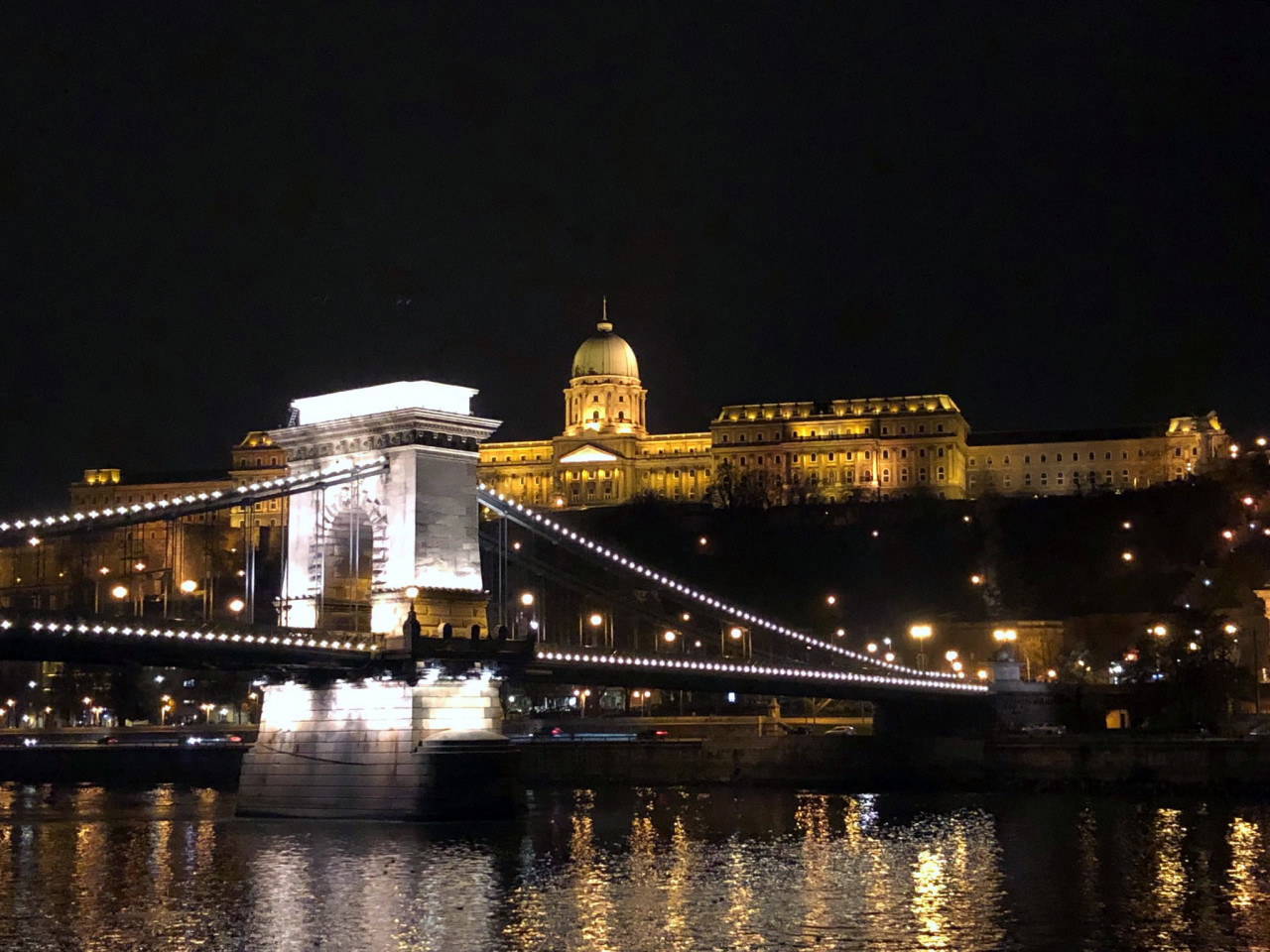
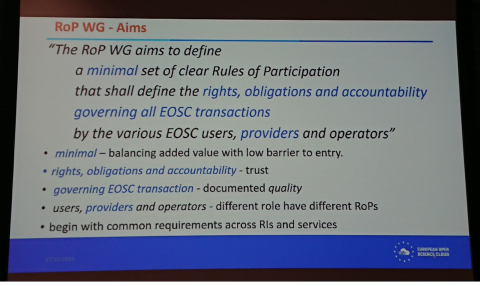
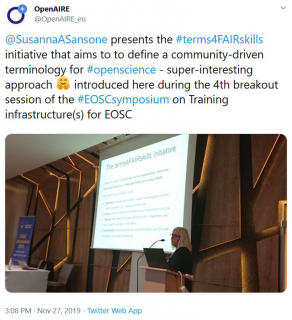
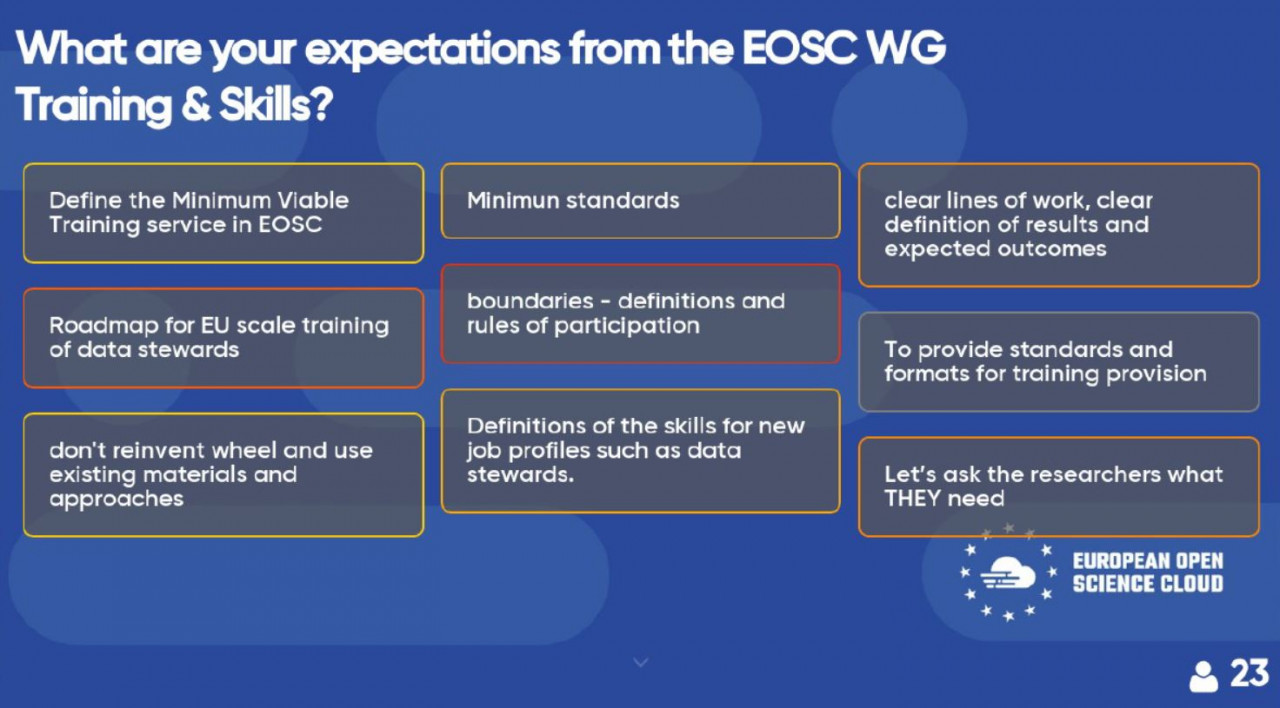
Comments